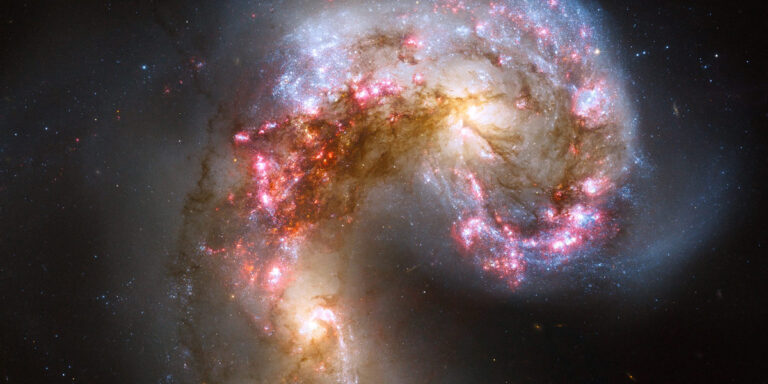According to several principles of quantum physics, the prohibited emission lines should not exist. However, the scientists clarified that because quantum physics is complicated, some of the rules used to anticipate it were developed in Earthly laboratories.
For some time now, the Hubble Space Telescope has been able to take pictures of bright spiral galaxies; most recently, it was able to take pictures of a new galaxy that was illuminated by the “forbidden” light. This galaxy, which goes by the name MCG-01-24-014, is thought to be located about 275 million light-years away from Earth.
MCG-01-24-014: Galactic Overview
The spiral galaxy known as MCG-01-24-014 is described as an active galactic nucleus (AGN) with a very energetic core; it is classified as a Type-2 Seyfert galaxy; the mission specialists from Hubble are reportedly overseen by both NASA and the European Space Agency. Seyfert galaxies are thought to be the host for the most common subclasses of AGN, along with quasars.
Seyfert galaxies are relatively luminous and their central AGN does not outshine its host, whereas quasars are extremely distant AGNs with incredible luminosities that outshine the host galaxies. Both quasars and Seyfert galaxies have further added the subclasses. Type-1 and Type-2 are the main subtypes within Seyfert galaxies, although the precise classification of AGNs is nuanced.
In order to distinguish between them, astronomers have looked at their spectra, or color range, which is the pattern that appears once light has been split into its individual wavelengths. Type-2 Seyfert galaxies release spectral lines that are connected to the specific “forbidden” emission lines. In order to understand why light coming from a galaxy will be classified as “forbidden,” it is necessary to understand the underlying causes of spectra.
Because certain chemicals and atoms absorb and emit light at extremely specific wavelengths, spectra provide additional insight into how they function.
Why is there quantum physics at all?
The team explained that quantum physics is complex and that some of the rules used to predict the forbidden emission lines were developed under laboratory conditions here on Earth. The electrons are the tiny particles that orbit the nuclei of molecules and atoms and can only exist at very specific energies. The electrons will only be able to gain or lose very specific amounts of energy during the process. This very specific energy corresponds to the wavelengths of light which are absorbed or emitted.
As a result of these rules, this emission has been classified as “forbidden”—an event so rare that it is usually disregarded. However, in space, in the midst of a very energetic galactic core, these traditional beliefs are violated, allowing the “forbidden” light to reach our direction.

